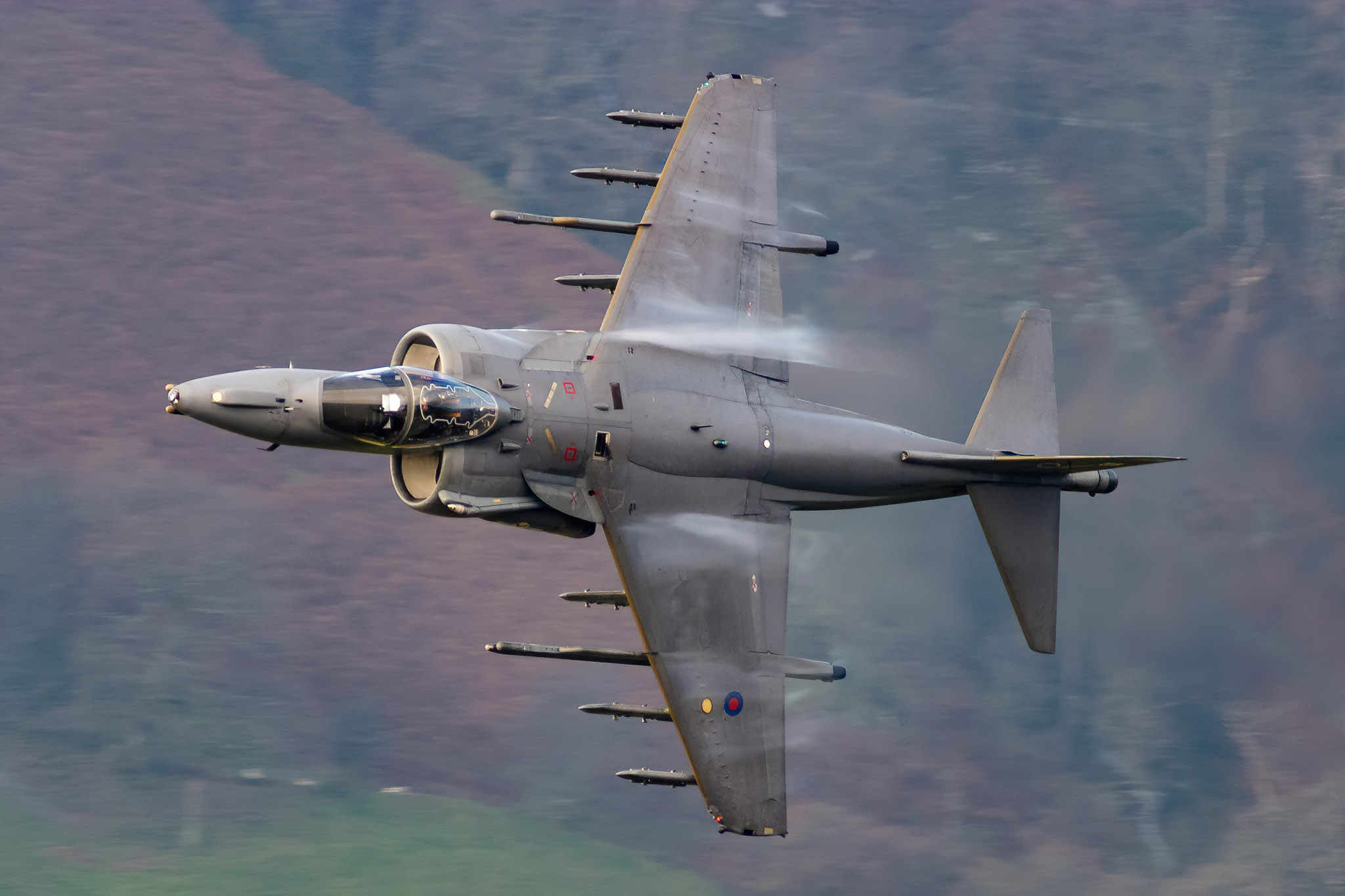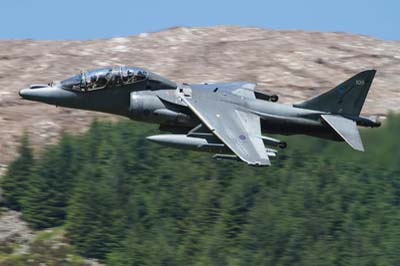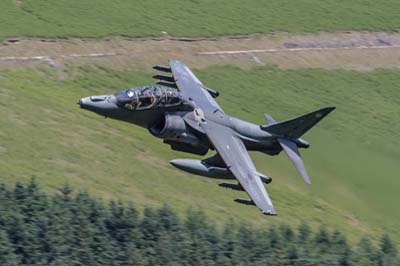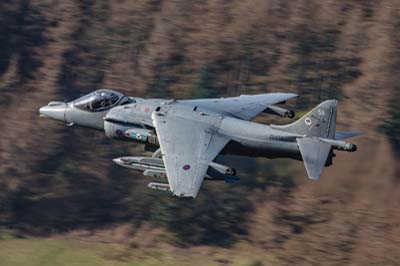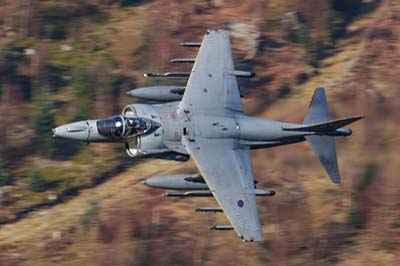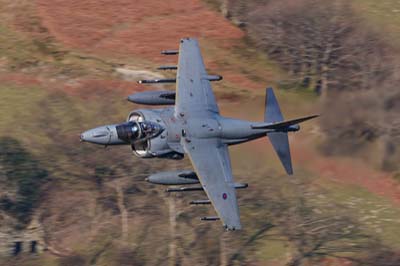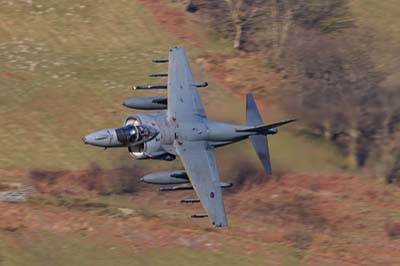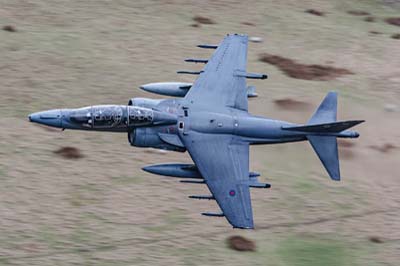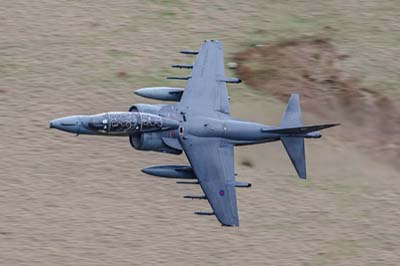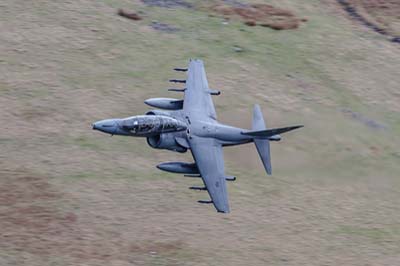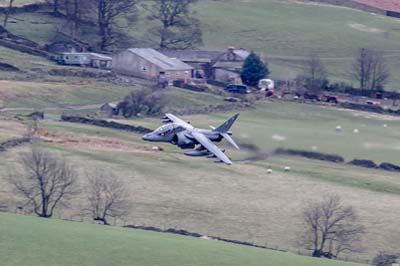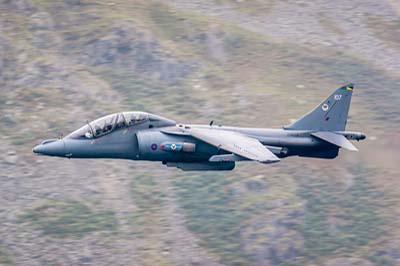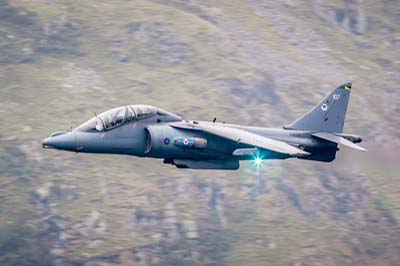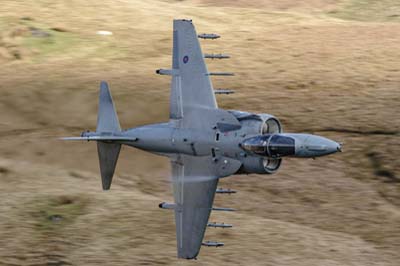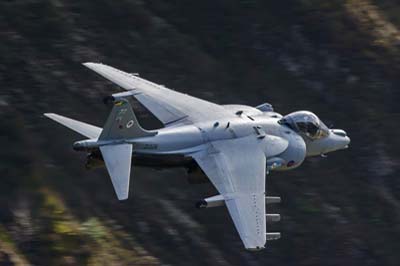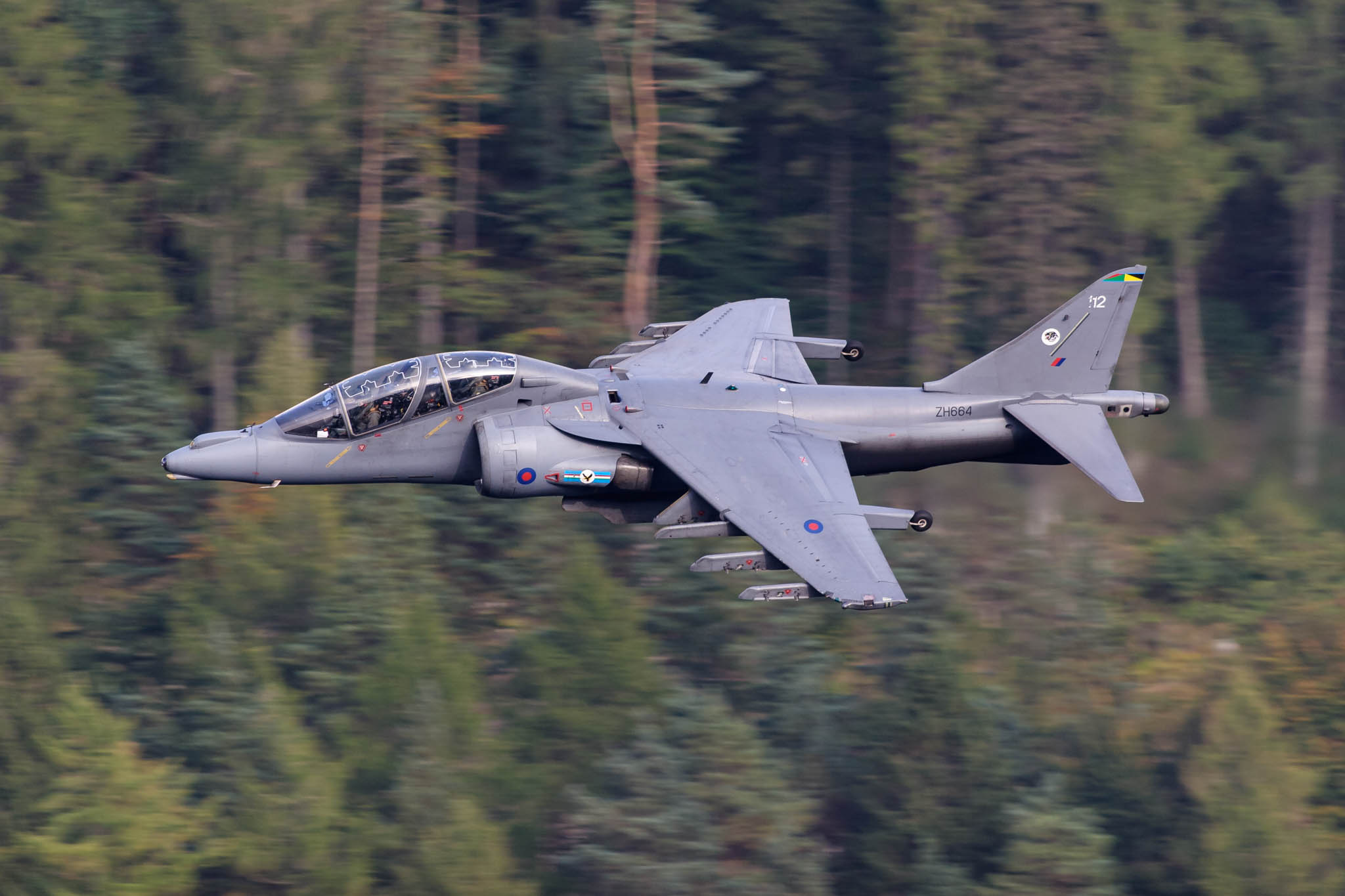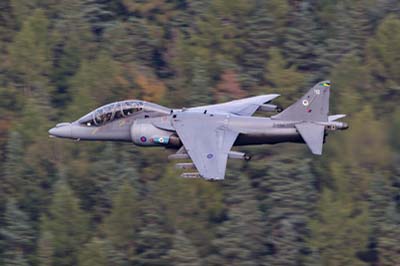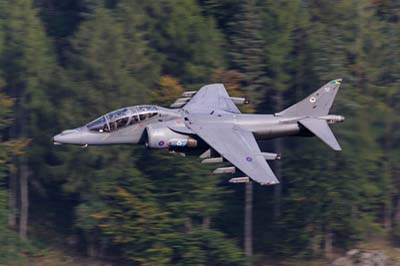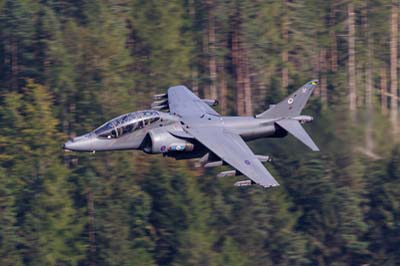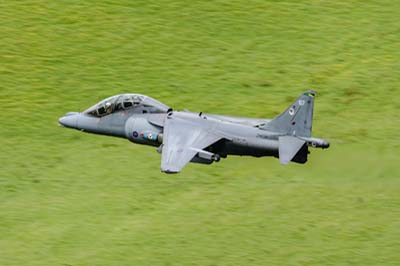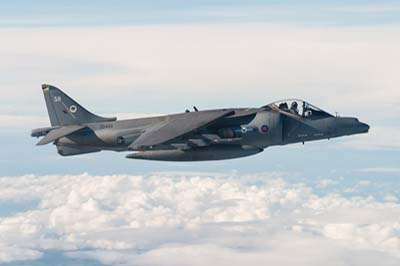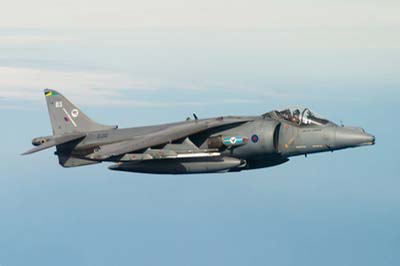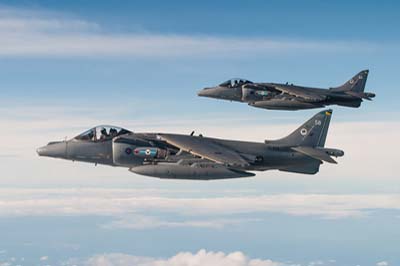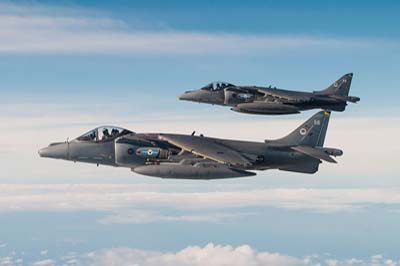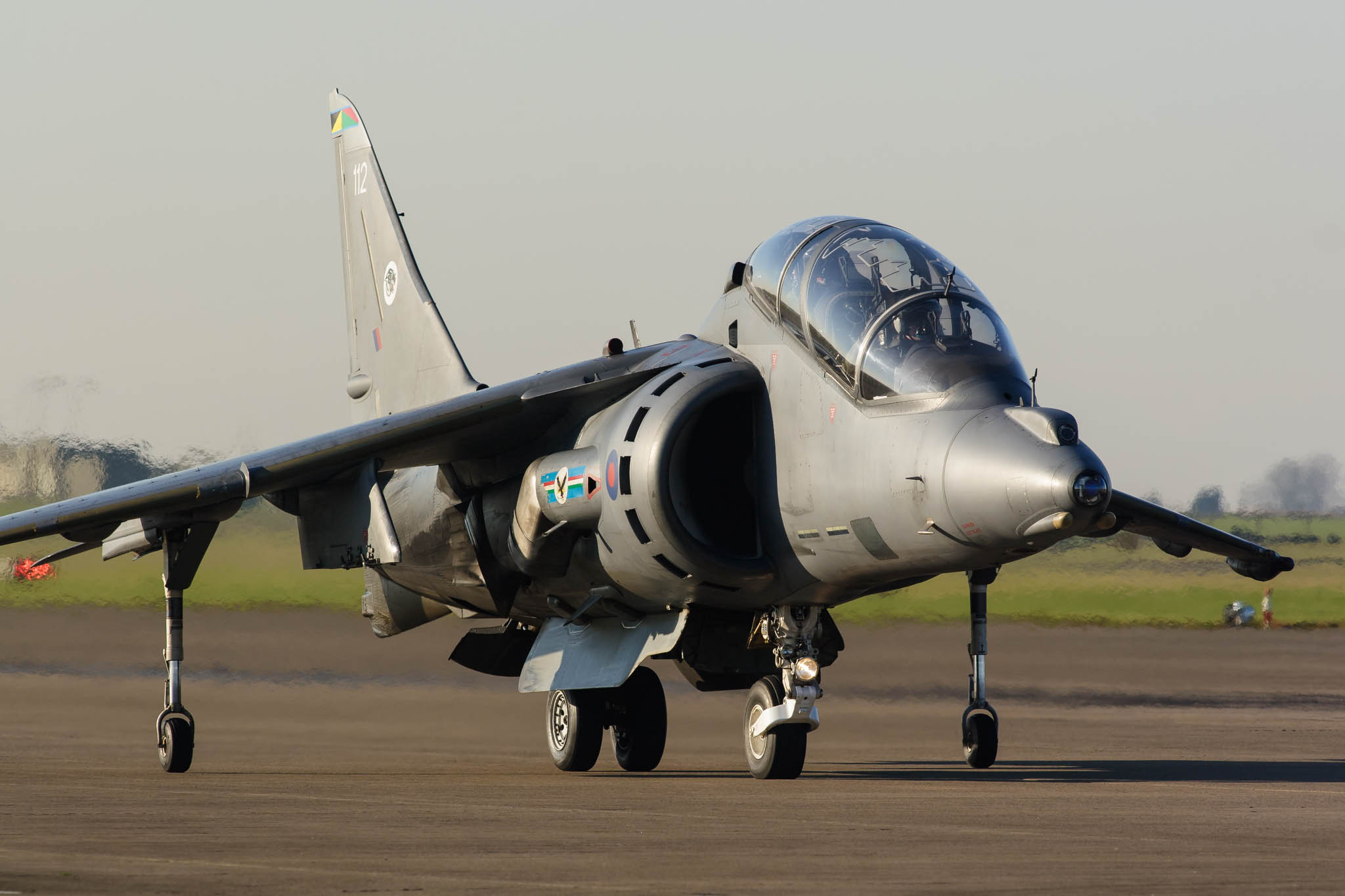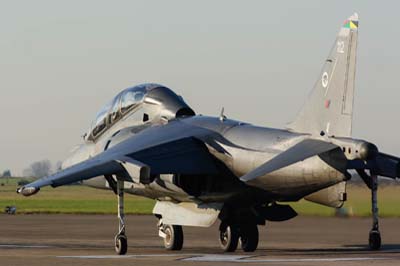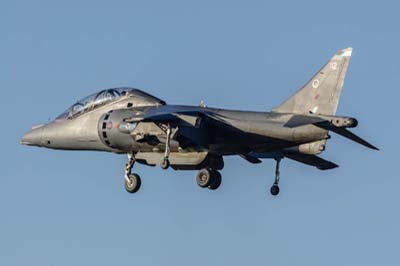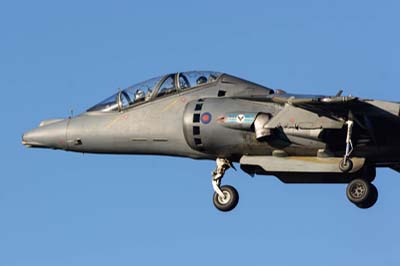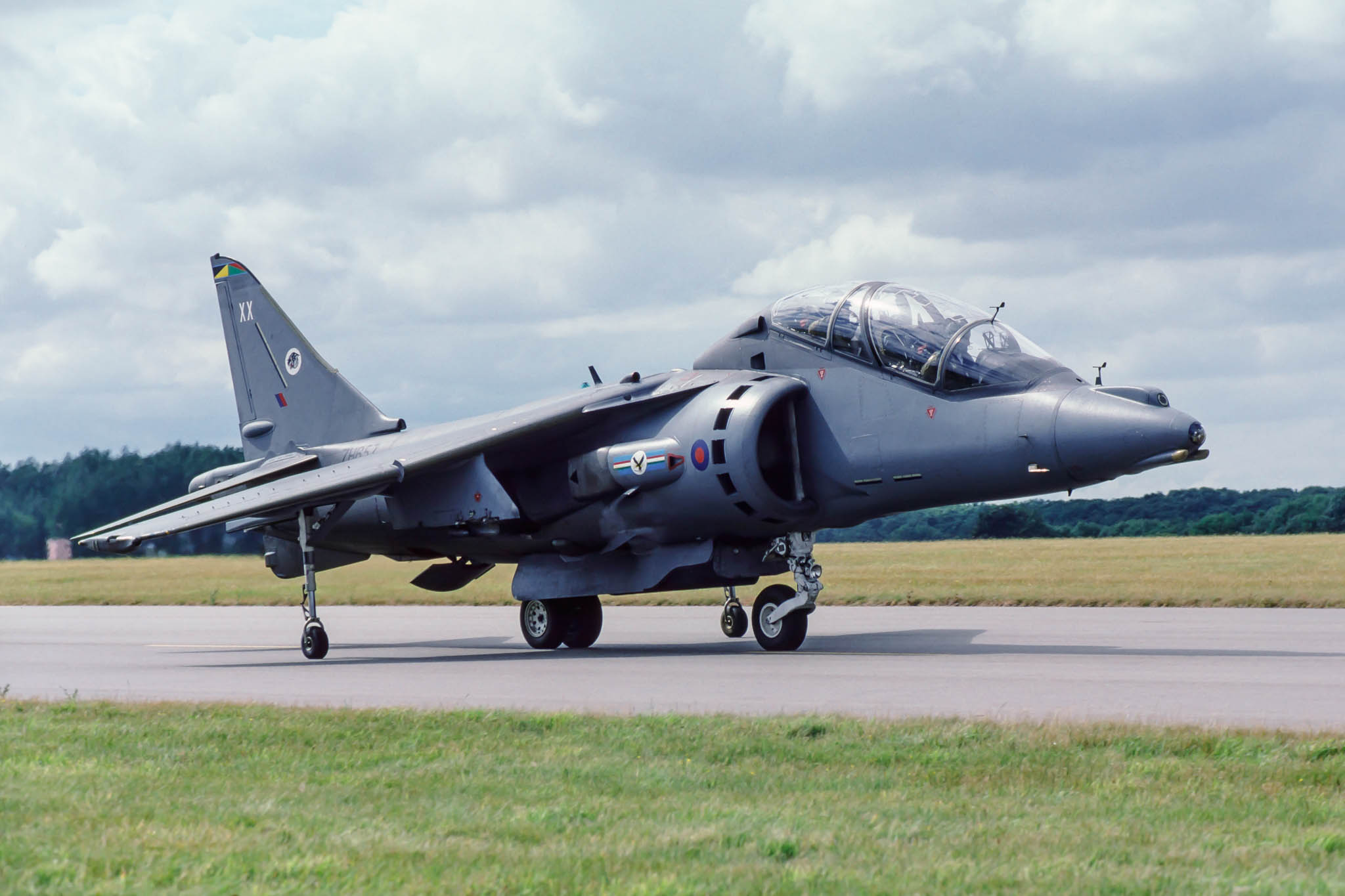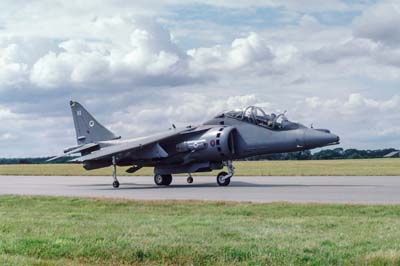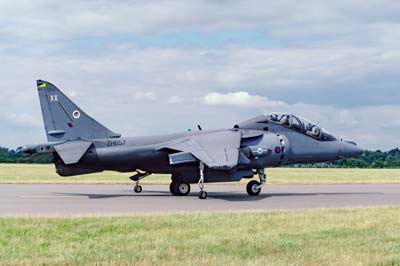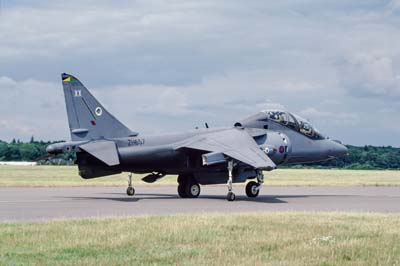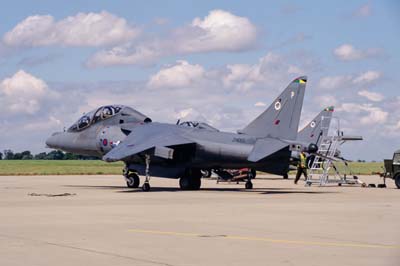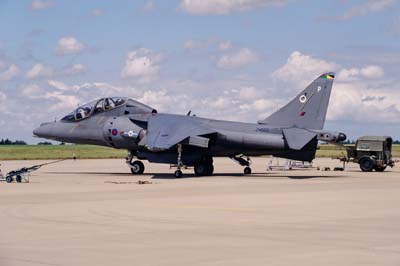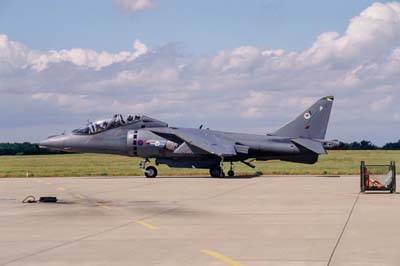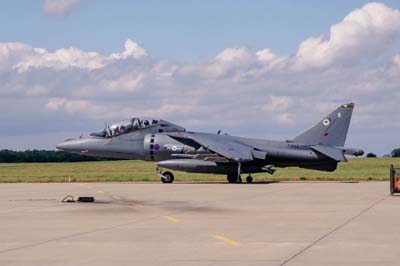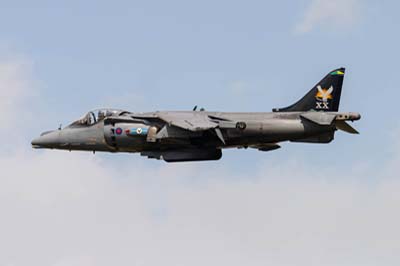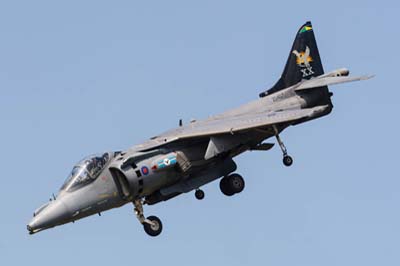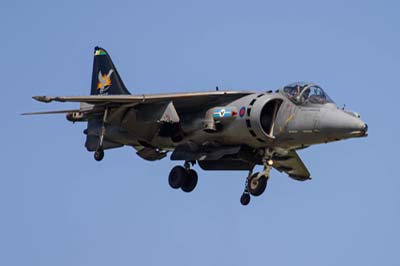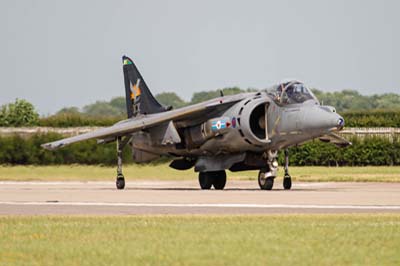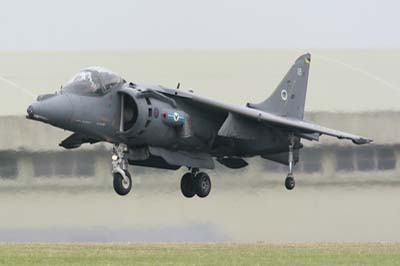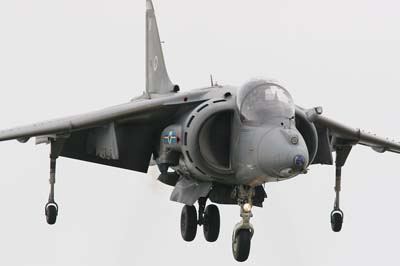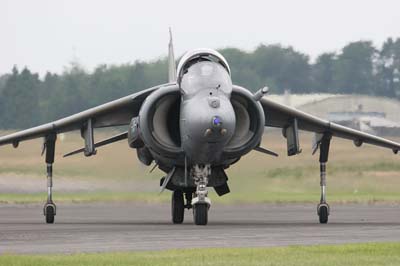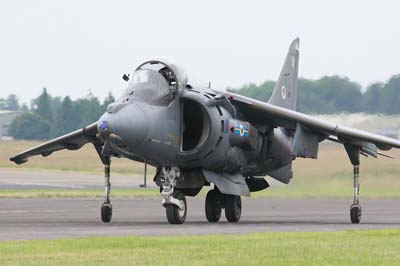In Action
20(Reserve) Squadron - RAF Wittering
Disbanded
|
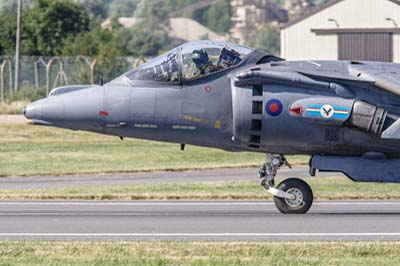
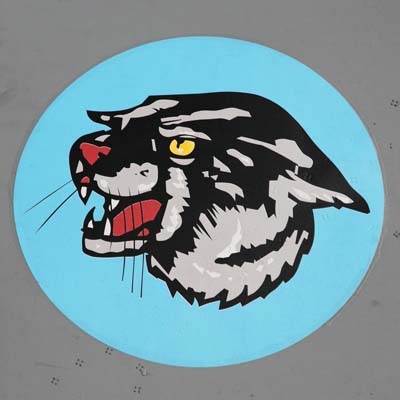 Following the Basic Fast-Jet Training (BFJT) course on the Tucano at RAF Linton RAF and RN students moved to RAF Valley for a year to complete Advanced and Tactical Fast Jet training on the Hawk. Graduate students were accepted at the Harrier OCU at RAF Wittering with 20(Reserve) Squadron on the Harrier T.12 for Operational Flying Training (OFT). After completing their time with 20(R) they moved the short distance to RAF Cottesmore and Joint Force Harrier (JFH) to fly the Harrier GR.9. RAF pilots transferred to either 1(F) or 4(AC) Squadron and the RN pilots to 800 or 801 Squadron of the Naval Strike Wing (NSW) which was part of JFH. The NSW operated from either onboard an Invincible class aircraft carrier or from an airfield.
Following the Basic Fast-Jet Training (BFJT) course on the Tucano at RAF Linton RAF and RN students moved to RAF Valley for a year to complete Advanced and Tactical Fast Jet training on the Hawk. Graduate students were accepted at the Harrier OCU at RAF Wittering with 20(Reserve) Squadron on the Harrier T.12 for Operational Flying Training (OFT). After completing their time with 20(R) they moved the short distance to RAF Cottesmore and Joint Force Harrier (JFH) to fly the Harrier GR.9. RAF pilots transferred to either 1(F) or 4(AC) Squadron and the RN pilots to 800 or 801 Squadron of the Naval Strike Wing (NSW) which was part of JFH. The NSW operated from either onboard an Invincible class aircraft carrier or from an airfield.
20(R) Squadron was divided into two Fights 'A' and 'B'. 'A' Flight is tasked with weapons training, tactical operations and electronic warfare and with producing Qualified Weapons Instructors and Qualified Electronic Warfare Instructors. 'B' Flight are responsible for training pilots on aircraft handling (vertical and short take-off and landing (VSTOL) along with navigation, instrument flying and air combat.
Left: When 233 Operational Conversion Unit (OCU) was first formed at RAF Pembrey on September 1, 1952, the Squadron’s Welsh Wildcat emblem was chosen as it was the crest of the ancient local Borough of Kidwelly, the nearest town to the airfield. The black Welsh Wildcat on a blue background was carried forward by 20 (Reserve) in 1973 when it became the Harrier OCU.
On March 31, 2010 20(R) Squadron disbanded, 4(AC) Squadron disbanded at RAF Cottesmore and 4(Reserve) Squadron reformed at RAF Wittering as the Operational Conversion Unit (OCU), replacing 20(R) Squadron. |
| Harrier GR.7 (ZD466 '56') flying at low-level in Wales in December 2003. |
| Left to right: Harrier T.12 (ZH661 '109') unmarked but using 20(R) Squadron callsign 'Striker 22' through mid Wales in June 2010. |
| Left to right: Harrier GR.9 (ZD468 '58') at low-level in mid Wales in March 2009. |
| Harrier T.12 (ZH665 '113') following the M6 in Cumbria in March 2008. |
| Harrier T.10 (ZH659 '107') low-flying in the Lake District in 2005 and Harrier GR.9 (ZG506 '77') second of a pair using callsigns 'Pagan 1' and 'Pagan 2' they were operating with 20(R) Squadron in Wales in March 2007. |
| Harrier T.10 (ZH664 '112') low-flying in Cumbria in October 2005. |
| Left to right: Harrier T.10 (ZH664 '112') low-flying in Cumbria in October 2005 and Harrier T.10 (ZH659 '107') in mid Wales in July 2007. |
| Harrier GR.7s (ZG512 '83' and ZD468 '58') during air to air refuelling sorties in 2004. |
| Harrier T.12 (ZH664 '112') back-tracking down the runway at Cottesmore after landing for another short take-off. |
Left to right: Harrier T.12 (ZH664 '112') flying from RAF Cottesmore in December 2007.
|
| Harrier T.10 (ZH657 'XX') with 20(R) Squadron at RAF Wittering in July 1999. |
| Left to right: Harrier T.10 (ZH657 'XX') and Harrier GR.7 (ZD404 '33') both with 20(R) Squadron at RAF Wittering in July 1999. |
| Left to right: Harrier T.10s (ZH660 'P' and ZH665 'S') with 20(R) Squadron at RAF Wittering in July 1999. |
| Harrier GR.7 (ZD407 '36') in 20(R) Squadron special scheme on the display circuit in 2004 and 2005. |
| The classic Harrier display which despite the intense noise levels is one of the main highlights for every air show enthusiast. Harrier GR.7 (ZD351 '18') displaying at Kemble in 2006. |
